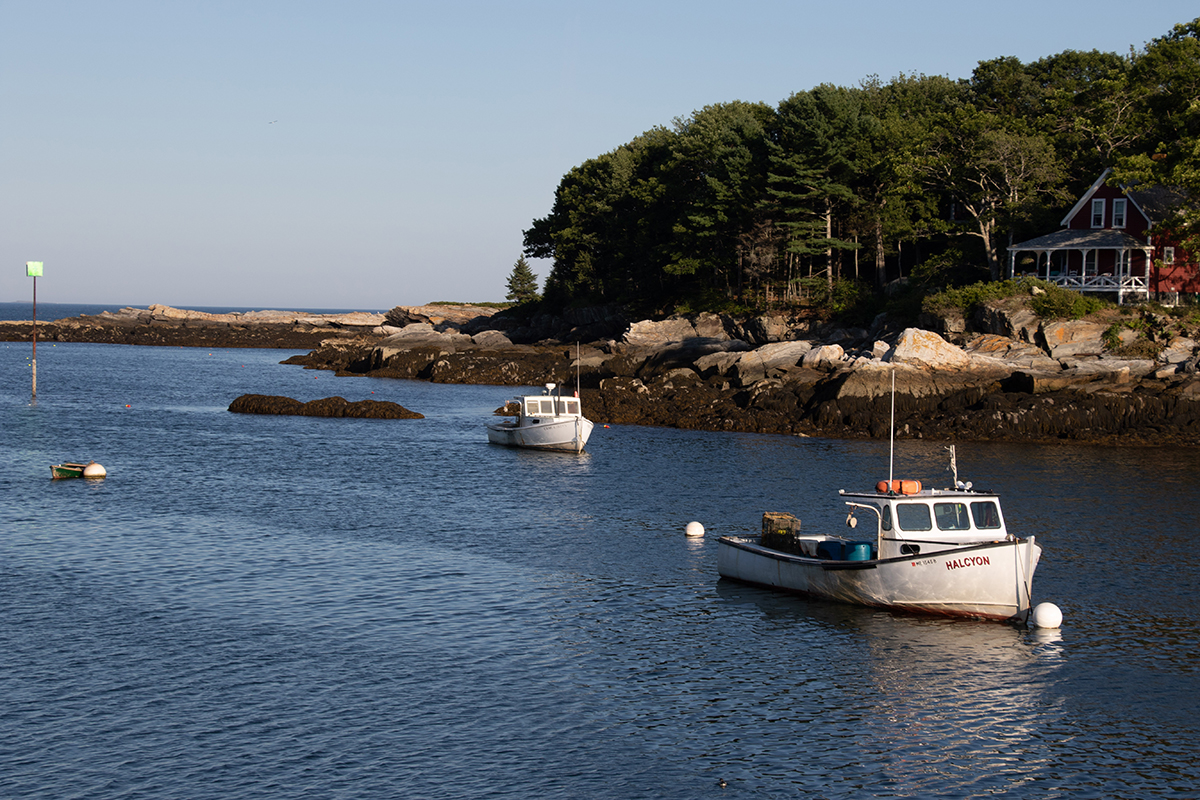
Maine Sea Grant Announces New Biennial Research Projects
Maine Sea Grant is pleased to announce five new research projects recommended for funding through our competitive biennial research program (pending final approval by the National Oceanic and Atmospheric Administration). Led by scientists from research and education institutions in Maine, the two-year projects will support scientific research focused on offshore wind interactions, the role of microplastics in microbial safety of marine foods, shad and river herring management, and the range expansion of blue crabs.
For more information, please read project descriptions below.
Co-design of virtual environments for commercial fishing and offshore wind interactions
Alison Bates, Colby College
State and Federal policies that encourage offshore wind as a solution to meet clean energy targets have set in motion significant interest in developing offshore wind throughout the U.S. In Maine, fishermen have expressed a strong interest in the ability to visualize hypothetical offshore wind technologies to better understand how offshore wind will affect livelihoods. This project will develop and test a prototype immersive virtual environment that includes floating wind infrastructure for fishermen to experience the underwater motions of floating wind turbines. This will help advance understanding of how fishing communities perceive risks and uncertainty in operating within and around wind turbines, inform whether co-existence solutions exist, and offer opportunities for fishers to advise on the realities of operational changes.
Inviting conversation on a daunting topic: The role of microplastics in microbial safety of marine foods
Kristin Burkholder, University of New England
Microplastics are ocean pollutants that reach high concentrations in bivalves, such as oysters. Pathogens attach to buoyant microplastics, and microplastics may aid microbial entry into marine foods. This study will compare microplastic load in oysters reared in traditional plastic netting versus plastic-free gear, and examine microplastic effect on pathogen entry into oysters. Findings from this study will help to inform best practices in bivalve cultivation and will aid in future strategies aimed at protecting microbiological safety of marine foods.
Supporting co-management of river herring: Collaborative research to understand river herring population dynamics
Emily Farr, Manomet
Anadromous river herring play a key role in freshwater and marine ecosystems, are economically and culturally important to Maine’s coastal communities, and support a traditional commercial fishery. To inform management of this important species, fisheries managers rely on data collected by harvesters and communities. This project will support community-driven research to better understand river herring life history dynamics and to document the effort of community stewardship, both of which are critical to informing fisheries management and coastal ecosystem health.
Evaluating the northward range expansion of the blue crab through monitoring and collaborative capacity building
Jason Goldstein, Wells NERRS
Climate change is facilitating the range expansion of blue crabs (Callinectes sapidus) into the Gulf of Maine, threatening native habitats, species, and fisheries; they may also become a novel marine resource in the area. The goal of this project is to develop and implement a comprehensive monitoring plan for assessing Maine blue crab populations that leverages community and industry observations and fosters a consortium of stakeholders to catalyze knowledge sharing via collaborative research, education, and outreach.
Using hydroacoustics to support shad and river herring management
Karen Wilson, University of Southern Maine
Data for management of juvenile American Shad and river herring (alosines) in the Kennebec River is generally limited to abundance as determined by Maine Department of Marine Resource (MDMR’s) annual beach seine surveys. This project will augment these data by leveraging MDMR’s survey to collect fish samples for a better understanding of the ecology of these juveniles and will use the survey data to complement a proof of concept hydroacoustic survey of alosine abundance in deeper areas.
Posted 11 April 2024
